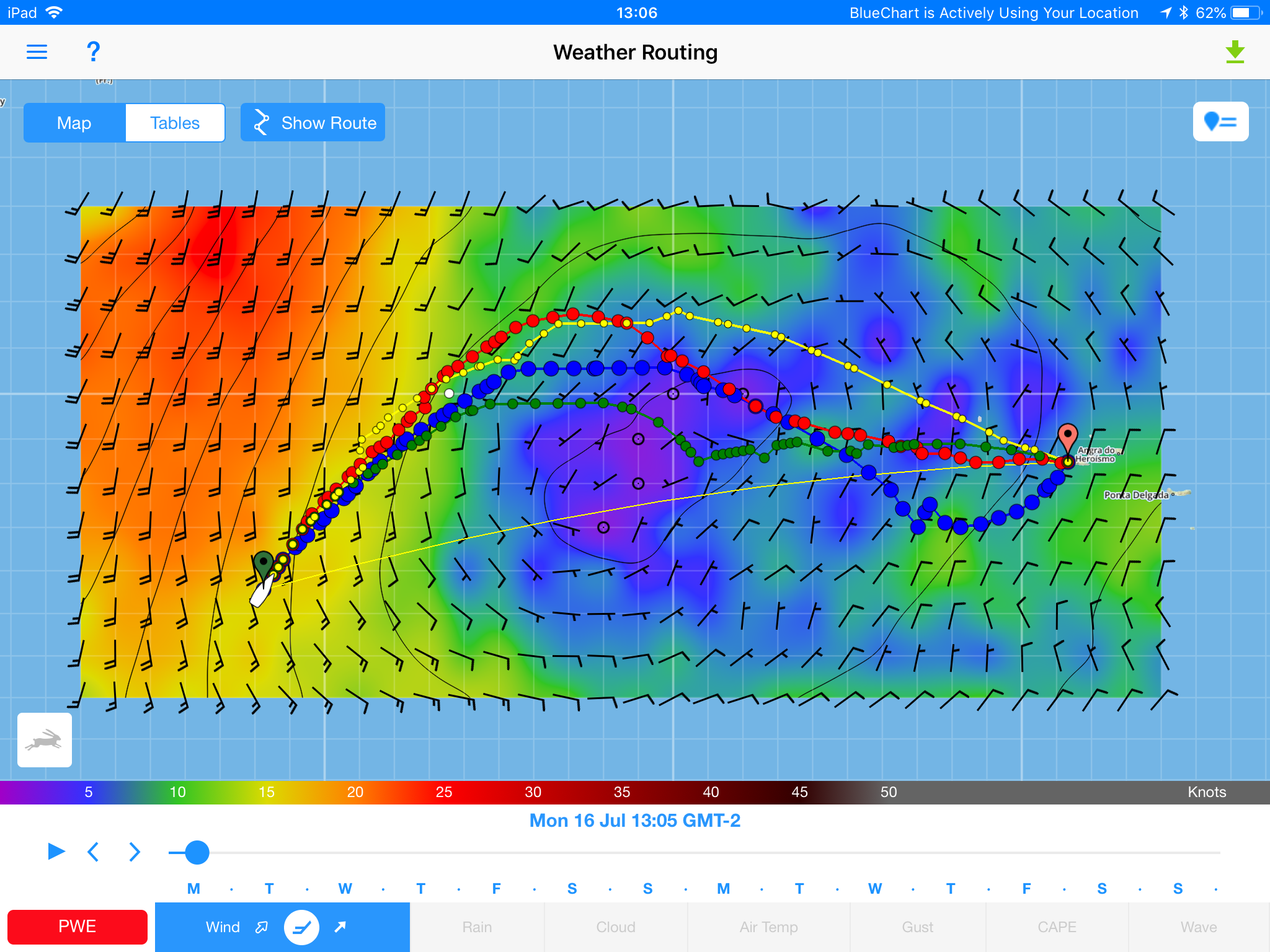When I was a small child growing up in Puerto Rico, I thought that hurricanes were conscious beings. That they could make choices about where to go and if they made the right choices, they could grow larger and stronger. The wrong choices would weaken them. I also thought that they chose to attack small islands in the Caribbean when they wanted to, or chose to avoid the small islands and spare the islanders who were living there. I was 5, give me a break.
Now that I’m older, I understand that hurricanes are merely weather phenomenon and their actions are not controlled by conscious choices but by the forces acting on them.
Crossing the North Atlantic in the Summer means that you will need to be aware of and avoiding the Hurricanes that (typically) are raging south of you.
Every year is different and every hurricane is special, but in general, hurricanes form off the coast of Africa and intensify as they travel across the Atlantic. Once they get to the Caribbean, they are powerful and will either deviate north which will cause them to skirt the East Coast of the United States or they will slam into the Gulf of Mexico.
In general, if you are North of the Doldrums, and East of Bermuda, then you are safe from hurricanes. Hurricanes have trouble making it through the Doldrums and tend to lose a lot of steam as they venture north. They are also incapable of traveling through the high pressure system known as the Azores High, which is why the Azores are safe from Hurricanes.
We know this information very well, but do the hurricanes?
In 2018, we were in the Harbor of Bermuda when Hurricane Chris was approaching. We sailed away and left to hide further east of it as it raged on to the North West of our position. We left Bermuda on July 9 and made it to Horta, Faial, Azores, on August 2. We had great sailing going across and were safe in our knowledge that we were where hurricanes could not reach us.
Debby formed in the path we sailed on August 9.
Ernesto formed in the path we sailed on August 15.
Joyce formed in the path we sailed on September 12.
Leslie formed in the path we sailed on September 23.
You get the picture. There is no safe place from a hurricane while out in the ocean. Areas of the ocean that are famous for stopping the passage of a hurricane and deflecting them away actually had hurricanes (Leslie) spawn in there and thrive for over a month!
The weather patterns of the past have changed and the storms are becoming more vivid and with fewer rules that they must abide by.
Hurricanes are a major consideration for choosing what route and when to sail across the Atlantic, but the important part is to make sure your yacht is never caught in the path of a hurricane. Do what you can to avoid them and steer clear of them because your life does depend on it.




